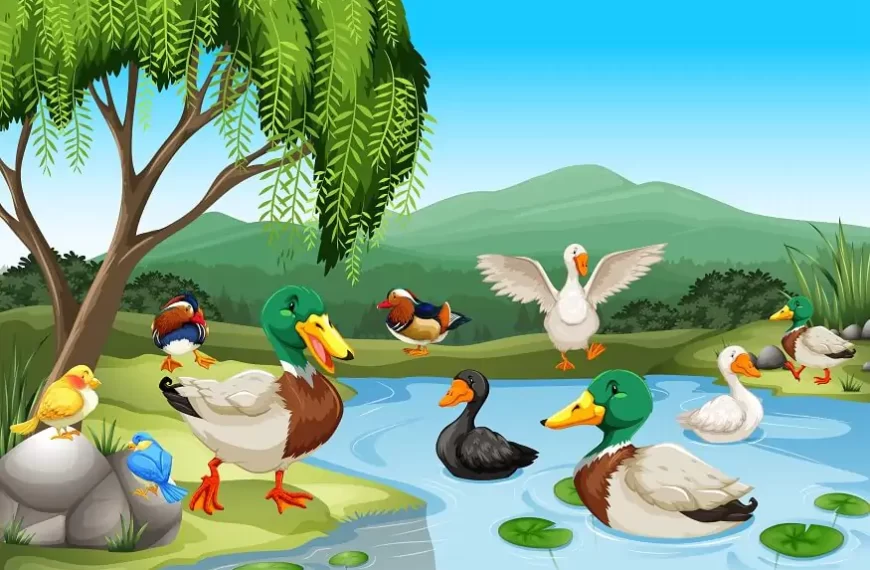Most people think of amphibians as the only animals that thrive both in water and on land, but they’re not the only ones with this amazing dual lifestyle. There are other remarkable land and water animals that thrive in both environments. From amphibians like frogs, toads, and salamanders to reptiles, birds, and even mammals, the natural world is home to a variety of species that navigate between these two worlds. Amphibians, for instance, have a life cycle that begins in water, where they use gills for respiration and later transition to land, relying on lungs. They usually stay in freshwater habitats and warmer climates and sometimes burrow underground to find comfort in harsh weather.
But what about mammals, reptiles, and birds? Some species, like turtles, crocodiles, and even penguins, are equally impressive, adapting to both land and water in their own unique ways. These animals that live both on land and water show how amazing nature is, finding clever ways to survive in both water and on land. They remind us how wonderfully different and special life can be.
Let’s take a closer look at these amazing animals that live in water and land and see how they adapt to live in both environments.
|
Land and Water Animal |
Food |
Size and Weight |
Speed |
Geography |
|
Mugger Crocodile |
Fish, amphibians, reptiles (snakes, turtles), birds, and mammals (e.g., monkeys). |
Length: 4–5 meters (13–16.5 feet); Weight: ~450 kg (990 pounds), max 700 kg (1,540 pounds). |
Can sprint up to 13–14.5 km/h (8–9 mph) on land. |
Found worldwide, mostly in South Asia, living in lakes, rivers, marshy areas, and artificial ponds. |
|
Beavers |
Soft cambium layer under bark, buds, leaves, twigs, aquatic plants, woody matter in winter. |
Length: Up to 80 cm (31 inches); Weight: 16–30 kg (35–66 pounds), heaviest over 50 kg (110 pounds). Tail: ~45 cm long, 13 cm wide. |
Swim at 8 km/h (5 mph), hold breath for up to 15 minutes. |
Native to North America, Europe, and Asia, they live in lakes, ponds, marshes, rivers, and shorelines of large lakes. |
|
Crabs |
Omnivorous: Seaweed, shrimp, fish, other crabs, worms, squids, starfish, snails, and fish eggs. |
Diameter: ~40 cm (15.74 inches); Largest recorded: 10.72 inches carapace width, weighing 1.1 pounds. |
Swimming crabs: Up to 6.5 km/h (4 mph). |
Found globally in oceans, freshwater, and land there are around 850 freshwater crab species, especially in tropical areas. |
|
Ducks |
Cracked corn, oats, rice, birdseed, frozen peas, lettuce, sliced grapes. |
Weight: 0.2–22.5 kg (0.5–49 pounds); Domestic ducks: Length up to 60 cm. |
Fly at 40–60 mph, averaging 50 mph. |
Found in various watery habitats, including marshes, oceans, rivers, ponds, and lakes; thrive in both freshwater and seawater environments. |
|
Frogs |
Insects (flies, moths), snails, slugs, worms; tadpoles eat algae, adults switch to plants and bugs. |
Size: 0.5 inches (Cuban tree frog) to 15 inches (West African goliath frog). Weight: 2 ounces to 7 pounds. |
Can speed up to 10 mph. |
Found worldwide, predominantly in tropical rainforests, swamps, and ponds. |
|
Hippopotamus |
Herbivorous: Grass; can consume up to 110 pounds of grass in one night. |
Length: 10.8–16.5 feet; Weight: Males 3,500–9,920 pounds, Females ~3,000 pounds. |
Swim at 8 km/h (5 mph); run up to 30 km/h (18.6 mph) on land. |
Native to sub-Saharan Africa, inhabiting rivers and lakes in regions like Uganda, Kenya, Tanzania, South Africa, and Ethiopia. |
|
Penguins |
Fish, squid, krill, and other sea life. |
Height: 15 inches to 3.5 feet (Emperor penguins: 45 inches); Weight: 2–88 pounds. |
Swim at speeds of 6.5–7.9 km/h (4–4.9 mph); burst speeds up to 40 km/h (24.8 mph). |
Found only in the Southern Hemisphere, mainly in Antarctica and sub-Antarctic islands; also found in New Zealand, Galapagos Islands, and South Africa. |
Here’s more detail on these animals that live in water and land.
- Mugger Crocodile
- Beavers
- Crabs
- Ducks
- Frogs
- Hippopotamus
- Penguins
- Sea Turtles
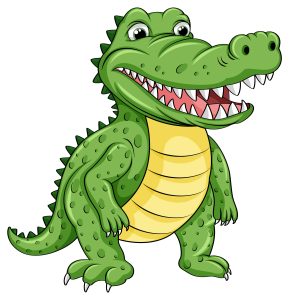
As mentioned above, not all animals that live on land and water animals are amphibians. Some of them are also reptiles and the gharial or marsh crocodile (also known as the mugger crocodile) is an excellent example of that.Mugger Crocodiles live in marshy areas. They are medium-sized, and have broad snouts, which is what gives them the name ‘mugger’!These freshwater reptiles not only inhabit lakes and rivers but can even be found in artificial ponds. Though they barely ever go beyond 5 meters in body length, they are still extremely powerful swimmers that can just as swiftly come on land to create burrows that they nestle in during winters.
FOOD
Adult muggers eat fish, amphibians, reptiles (mainly snakes and possibly turtles), birds and mammals (e.g monkeys).
SIZE AND WEIGHT
Muggers have the potential to reach lengths of 4 to 5 meters (13 to 16.5 feet). While the biggest ones can weigh up to 700 kg (1,540 pounds), the majority typically weigh around 450 kg (990 pounds).
Note:
1 pound (lb)= 0.453 kilograms (kg)
SPEED
They will also hunt for food on land, sometimes sprinting at speeds of up to 13–14.5 km (8–9 miles) per hour to catch their prey.
GEOGRAPHY
Though muggers are found worldwide, they are mostly found in many parts of South Asia.
Wondering which animals that live on land and water and are also cute?
Well, the beaver is surely one of them. Not part of Indian wildlife, these critters are found in abundance throughout North America except in California and parts of Utah, Nevada, and Arizona. They love to dwell in lakes, ponds, marshes, and rivers and are exclusively herbivorous. Their typical diet includes woody stems, leaves, and aquatic plants. But the most interesting thing about them is that beavers can build dams, thus creating a habitat where diverse biological communities can be found.
FOOD
Beavers primarily eat the soft cambium layer under bark, along with buds, leaves, and twigs from specific trees like willows and aspens. They also consume pond vegetation, bankside plants, and herbaceous vegetation in summer, while woody matter is their main food source in winter. Beavers fell shrubs, saplings, and trees, then cut them into manageable pieces to transport to their lodge. Edible branches are stored underwater near the lodge entrance for winter consumption when breaking through ice to get fresh branches is not possible.
SIZE AND WEIGHT
Beavers can grow up to 80 cm (31 inches) long and weigh between 16–30 kg (35–66 pounds). They keep growing throughout their life, with the heaviest beavers reaching over 50 kg (110 pounds). Their tail is unique, scaly, flat, and paddle-shaped, measuring up to 45 cm (about 18 inches) long and 13 cm (5 inches) wide.
SPEED
Beavers can swim at speeds of up to 8 kilometres per hour (5 miles/hr) and can hold their breath for up to 15 minutes.
GEOGRAPHY
Native to North America, Europe, and Asia.
Living in streams, rivers, marshes, and ponds and on the shorelines of large lakes, beavers construct dams of branches, stones, and mud, forming ponds that often cover many hectares.
Want to know which other animal lives on land and water but is not an amphibian?
Crabs are crustaceans, which means they are semi-aquatic with an exoskeleton or a shell. They have a pair of pincers on their front side along with claws, which do a pretty good job of protecting themselves against predators. They also use their ‘deadly’ weapons to search for food, which includes a wide variety of things from seaweed to shrimp. Yes, they are omnivores like us.
Though they can survive on both land and water, water is crucial to their survival. They can survive a couple of days on land without getting into water. Any longer than that and they might perish.
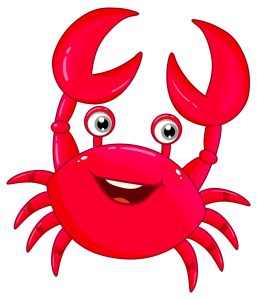
FOOD
They have a carnivorous diet, meaning they have a preference for meat. As a result, they go after fish, other crabs, worms, squids, starfish, and snails. Their hunting grounds are primarily the sea floor, where they search for creatures partially hidden by sand. Interestingly, Dungeness crabs are not picky eaters and will even devour fish eggs and other Dungeness crabs!
SIZE AND WEIGHT -H3
The biggest blue crab weighed 1.1 pounds and measured 10.72 inches from tip to tip across the carapace. An average crab falls somewhere in the middle and is only about 15.74 inches (40 cm) in diameter.
SPEED
Fiddler crabs, like some other crabs, are not the fastest creatures and depend on their burrows to stay safe. On the other hand, swimming crabs are speedy and can zip through the water at impressive speeds of up to 4 mph (6.5 km/h).
GEOGRAPHY
Crabs can be spotted in oceans worldwide, as well as in freshwater and on land, especially in tropical areas. There are around 850 types of freshwater crabs.
The list of water and land animal names that are not amphibians is expanding! Ducks, just like their cousins geese and swans, belong to the anseriformes, which are waterfowl.
You will often find ducks swimming in water with their hatchlings behind. But when it comes to feeding time, ducks will transition to land in search of foods such as plants and insects. That is not the only reason ducks go for a trip to the lands. When they are nesting on land, they go through the process of losing their feathers, which is a seasonal occurrence known as moulting.
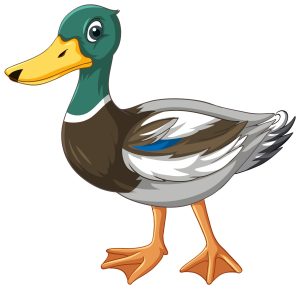
FOOD
Ducks, in general, eat cracked corn, oats, rice, birdseed, frozen peas, chopped lettuce, or sliced grapes.
SIZE AND WEIGHT
The tiniest species weigh less than 0.5 pounds (0.2 kilograms), whereas the biggest one can weigh up to 49 pounds (22.5 kilograms). Ducks’ height varies depending on their species and gender. On average, they stand at around 5 inches or 4 inches tall. Domestic ducks can reach a length of up to 60 cm.
SPEED
Most “waterfowl” fly at 40 to 60 mph in speed. Whereas many species average roughly 50 mph..
GEOGRAPHY
Ducks, also known as waterfowls, are feathered creatures that can be found in various watery habitats such as marshes, oceans, rivers, ponds, and lakes. They are primarily aquatic birds and can thrive in both freshwater and seawater environments.
Finally, we are back again to animals living in water and land and the names belonging to amphibians! Here is a wow-some fact about them. There are over 5000 known species of frogs on this planet. They come in all kinds of colours, and some of them even glow in the dark! How cool is that?
Native inhabitants of swamps and ponds, frogs can even be found in rainforests hanging out on trees. However, they love the water and they are not very good swimmers, they paddle along just fine due to their webbed feet. As for what they eat, there are no prizes for guessing that they love a hearty meal of spiders, insects, and small fish.
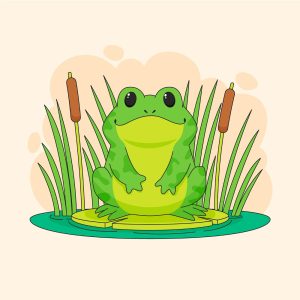
FOOD
Tiny frogs munch on insects like flies and moths, along with snails, slugs, and worms. They snatch their prey with long tongues and sticky saliva. Tadpoles, on the other hand, dine on algae in their pond homes. As they mature, they switch to feasting on plants and tiny bugs.
SIZE AND WEIGHT -H3
Frogs come in all shapes and sizes, depending on the species. Take the West African goliath frog, for instance. It can reach a whopping 15 inches in length and weigh up to 7 pounds! On the other hand, the Cuban tree frog is much smaller, measuring only half an inch and weighing around 2 ounces.
Note:
1 ounce = 28.34 grams
1 kilogram = 1,000 grams
1 gram = 0.035 ounce
1 gram = 0.001 kilogram
SPEED
A Frog speeds up to 10 miles per hour.
GEOGRAPHY
Frogs can be found all over the world, from the tropics to subarctic regions, but the majority of species are found in tropical rainforests. Around 88% of amphibian species are frogs, making them one of the most diverse vertebrate orders.
Yes, animals that live on land and water are called amphibians, but hippopotamuses are not one of them. Believe it or not, they are mammals, just like us. These large animals are semi-aquatic and are natives of the sub-Saharan region in Africa. They are the third largest land mammals on our beautiful planet.
They have nearly hairless bodies and can weigh up to 1300 kgs to 1500 kgs on average. Despite their stocky appearance, they are fast runners, capable of covering short distances at a speed of 30 km/h. Hippos are kind of nocturnal. They spend most of their day in mud or water and only come out at dusk to feed on grass.
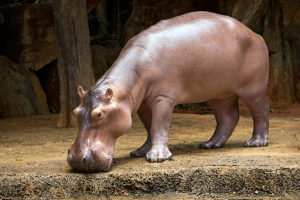
FOOD
Hippos mostly eat plants and are known as herbivores. They come out of the water in the evening to feed on grass. A hippo can consume as much as 110 pounds of grass in one night.
SIZE AND WEIGHT
The hippo is a massive creature that ranks among the largest mammals on our planet. Typically, male hippos weigh anywhere from 3,500 to 9,920 pounds, while females weigh around 3,000 pounds. In terms of size, hippos measure between 10.8 and 16.5 feet in length, with a shoulder height of up to 5.2 feet.
SPEED
Water slows down the movement of animals because of its mass or weight. This means that Hippos can’t swim very fast underwater. However, they can still swim at a speed of 5 mph (8 kph) and even walk underwater. On flat ground, they can run at a speed of 18.6 mph (30 kph).
GEOGRAPHY
Hippos can still be spotted in the rivers and lakes of the northern Democratic Republic of the Congo, Uganda, Tanzania, and Kenya. They also roam northwards towards Ethiopia, Somalia, and Sudan, westwards to The Gambia, and even as far south as South Africa.
Penguins are probably the cutest birds that live in both water and on land. These aquatic, flightless birds spend about half of their lives in water, swimming in the icy cold expanse of the Antarctic Ocean. However, they are also found in New Zealand, Galapagos Island, and South Africa.
They are pretty fast swimmers, with emperor penguins reaching a speed of up to 12 km/h, using their flippers to propel themselves forward deep into the ocean. As for what they like to feed on, penguins are big fans of fish, squid, krill, and other forms of sea life, which form a regular part of their diets.
Ever wondered how penguins can swallow fish whole when they eat? That is because they have really powerful jaws which they can use to grip prey. Plus, their tongues are spiny, which allows them to easily chomp down the prey they catch, even while swimming.
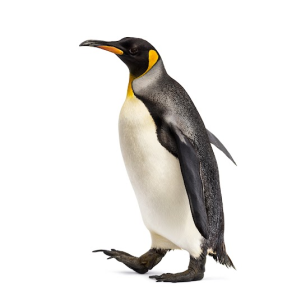
FOOD
Penguins eat krill (a shrimp-like crustacean), squid, and fish.
SIZE AND WEIGHT
Penguins come in different sizes and weights, which depend on their species. They can be as short as 15 inches or as tall as 3.5 feet. In terms of weight, they can range from 2 pounds to a whopping 88 pounds. The largest species of penguins, known as Emperor penguins, have an average height of 45 inches.
SPEED
King penguins can swim as fast as 12 kph (7.6 mph), but usually, they swim at a speed of 6.5 to 7.9 kph (4 to 4.9 mph). On the other hand, Adélie penguins are known to have burst speeds of 30 to 40 kph (18.6 to 24.8 mph), but their typical swimming speed is around 7.9 kph (4.9 mph).
GEOGRAPHY
Penguins can only be spotted in the Southern Hemisphere. The majority of them can be found along the coasts of Antarctica and on sub-Antarctic islands. Out of the 18 penguin species, 5 call Antarctica their home, while another 4 reside on the sub-Antarctic islands.
Sea turtles are fascinating creatures and one of the animals which live both on land and water. These ancient reptiles are well-known for their hard shells, which they use as protection from predators.
While male sea turtles spend most of their time in the water, females can be found on land. During the nesting season, female turtles return to sandy shores to lay their eggs.
FOOD -H3
Sea turtles have a diverse diet that varies depending on the species. Some sea turtles, like the green sea turtle, primarily feed on seagrasses and algae, while others, such as the loggerhead turtle, hunt for crustaceans, jellyfish, and mollusks. Their eating habits are shaped by their environment, as they forage in the ocean for a variety of marine organisms.
SIZE AND WEIGHT -H3
Sea turtles come in various sizes, with the leatherback being the largest of them all. Leatherbacks can reach lengths of up to 6 feet and weigh as much as 2,000 pounds. On the other hand, smaller species like the Kemp’s ridley turtle are more compact, typically weighing around 100 pounds, but they still have an impressive presence in the ocean.
SPEED -H3
While sea turtles are not particularly fast on land, they are swift swimmers in the water. When they need to, they can reach speeds of up to 22 mph, especially when they’re migrating or trying to avoid predators. However, when on land, they move much more slowly, taking their time as they crawl across beaches.
GEOGRAPHY -H3
Sea turtles can be found in oceans across the globe, thriving in warm, tropical, and subtropical waters. They often travel great distances, migrating between feeding areas and the beaches where they nest. While some species prefer shallow coastal waters, others, such as the leatherback, are known to venture into deeper, open ocean environments.
Here are some cool facts about sea turtles that kids will love.
Final Thoughts On These 8 Unique Animals
In conclusion, while we often think of amphibians as animals that live both in water and on land, there are many other creatures that can thrive in both environments. These animals have unique adaptations that allow them to survive and grow in such different places. Nature is truly amazing in how it supports life in so many ways!
If you want to read more fun and helpful articles about your little one’s growth, health, and learning, check out EuroKids Blogs. Don’t forget to explore our EuroKids Preschools to give your child the best start in their education!
Interlink Please
https://www.eurokidsindia.com/blog/types-of-animals-for-kids-herbivores-carnivores-and-omnivores.php





